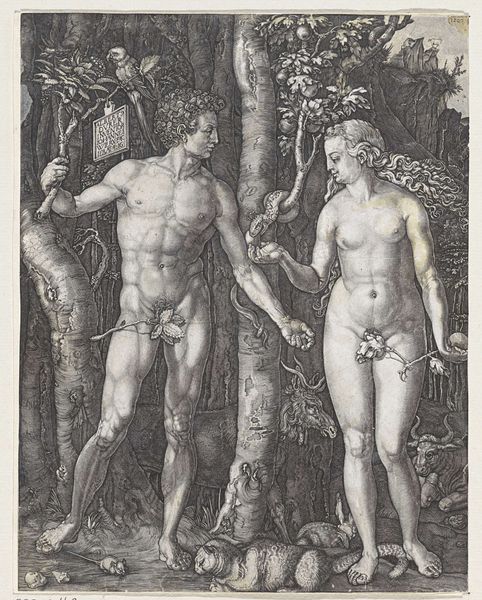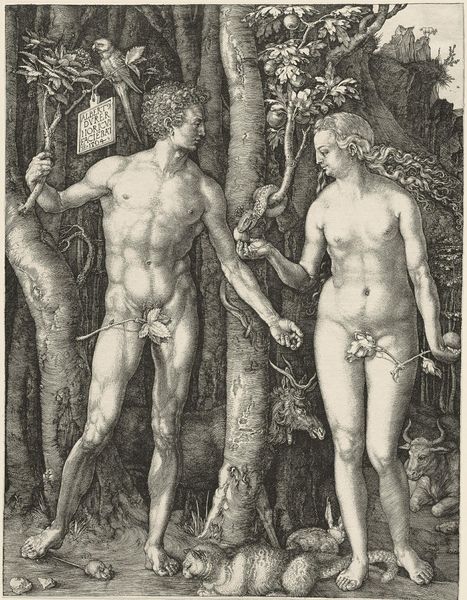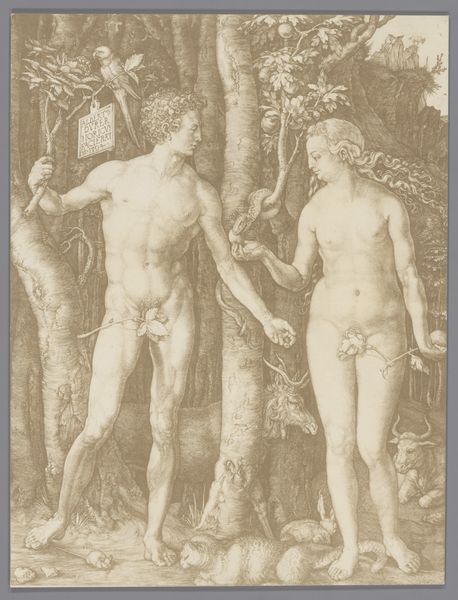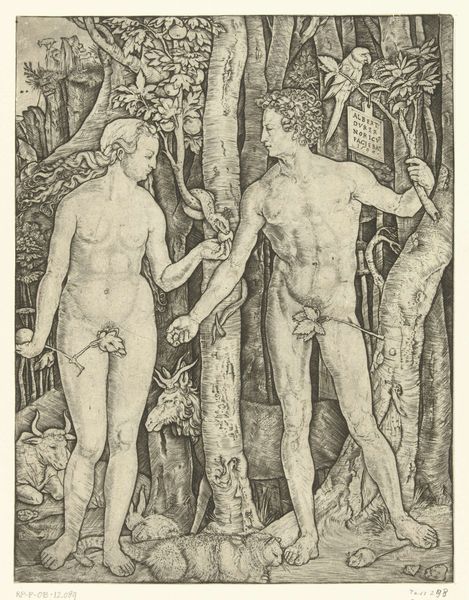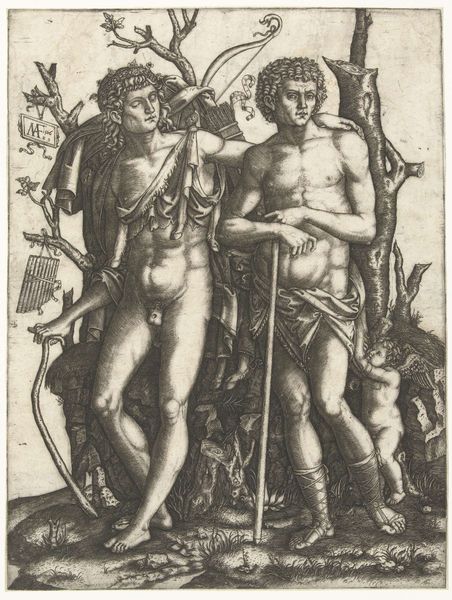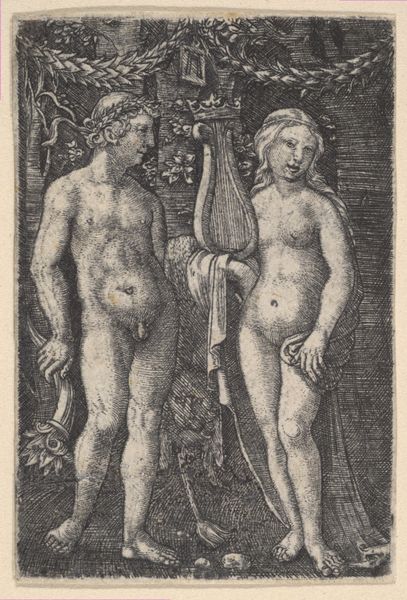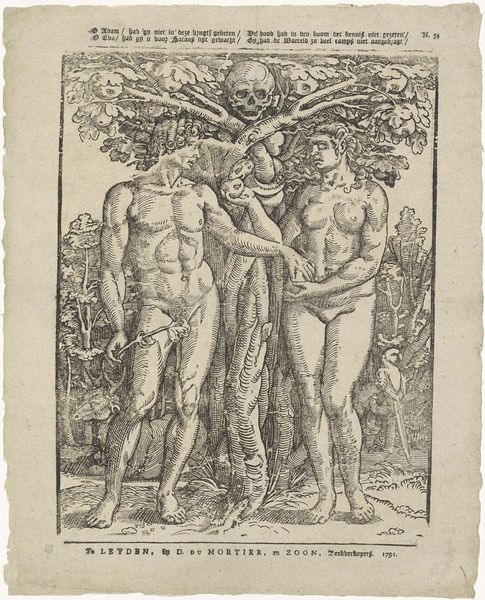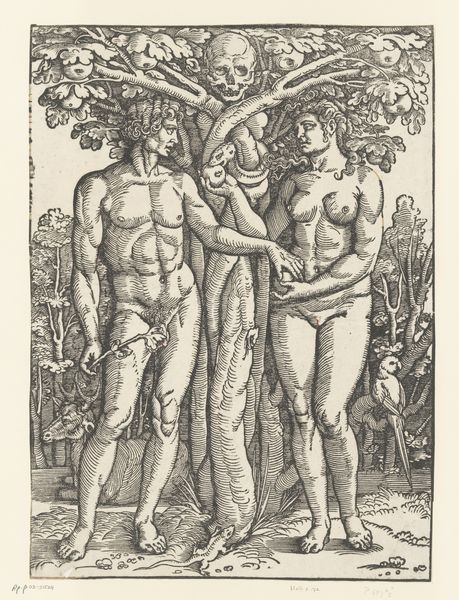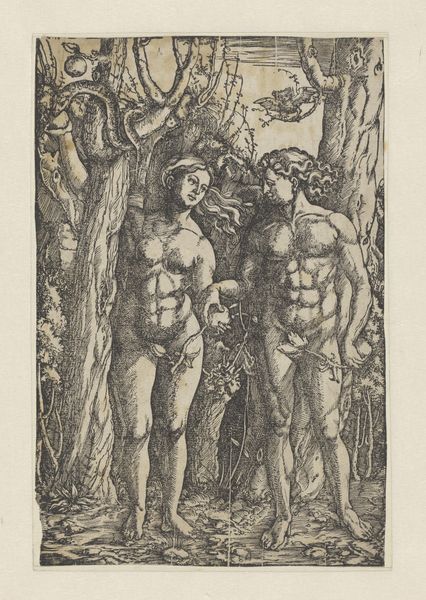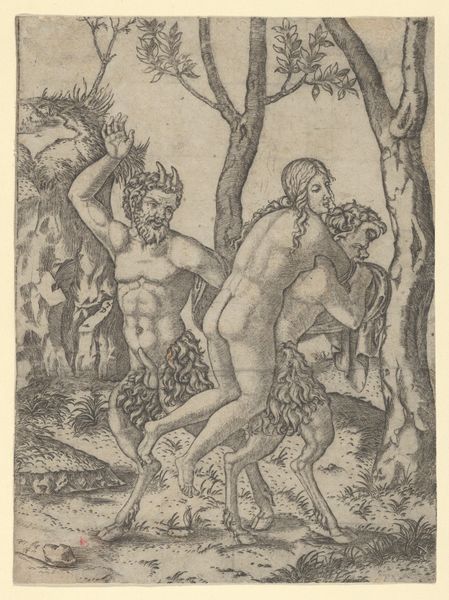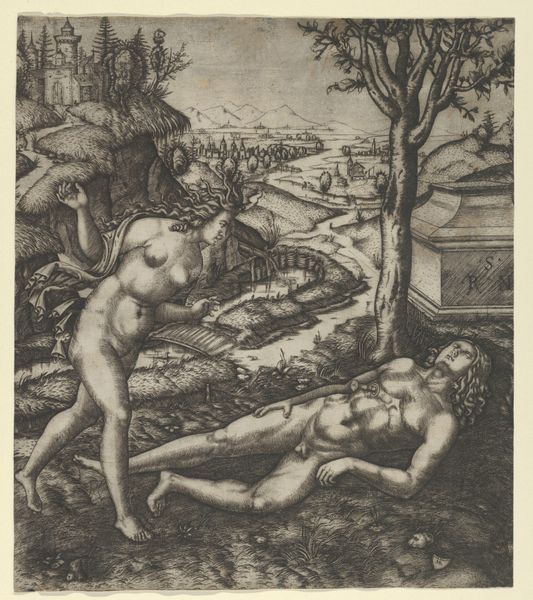
drawing, print, engraving
#
drawing
#
allegory
#
animal
# print
#
bird
#
figuration
#
history-painting
#
northern-renaissance
#
nude
#
engraving
Dimensions: Sheet: 9 1/2 × 7 7/16 in. (24.2 × 18.9 cm)
Copyright: Public Domain
Editor: We’re looking at Albrecht Dürer's "Adam and Eve," made sometime between 1485 and 1600. It's an engraving, and what strikes me most is the incredible detail and texture he achieves with the medium. The poses feel very deliberate, but what do you see in the composition? Curator: Observe how Dürer employs the burin to create a range of tonal values, achieving an almost sculptural quality. The contrasting light and shadow across the figures create definition, accentuating their idealised forms. Consider also the vertical composition. Editor: It almost feels like a study in contrasts – the smoothness of the figures against the dense, almost overwhelming forest. Why the crowding? Curator: Precisely. The close framing of the Garden, filled with symbolic animals and foliage, compresses the pictorial space, thus focusing the narrative's immediate tension. What visual elements contribute to this sensation? Editor: The parrot and snake definitely stand out, also, Adam and Eve echo each other formally, from the placement of arms to the position of the legs. Is this kind of parallelism common? Curator: This correspondence, the figures’ symmetry in posture and gesture, emphasizes the connection and impending consequence. Observe, for example, how they appear to exist in two planes – front and back- due to the sharp carving in the original plate. Note also how the animals on the floor recede gradually into shadow. It's masterful manipulation. Editor: I'm beginning to appreciate the layers of complexity. It's not just a biblical scene; it’s a carefully constructed visual argument about the structure of humankind, and possibly nature? Curator: Precisely. Dürer utilises visual cues—the arrangement of line, space, and texture—to invite us to unpack profound philosophical ideas inherent within the original sin, using its original source. The piece demonstrates his theoretical understanding, doesn't it? Editor: It certainly does! Thanks for shedding light on this print, this has been fascinating!
Comments
No comments
Be the first to comment and join the conversation on the ultimate creative platform.
